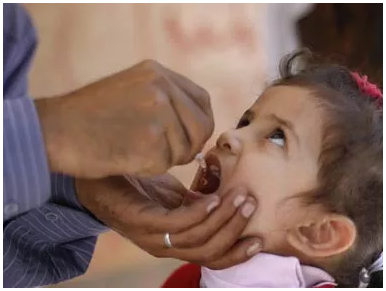Blog
India's vaccine scenario: A success story marred with regulatory lapses

Vaccination is one of the most important preventive measures against infectious diseases making it a great public health tool. The eradication of smallpox in the 70s and near eradication of polio are a testimony to this. However, while the private sector provides almost 80% of healthcare in India, as far as vaccination delivery is concerned, it is just the reverse. The private sector in India has got around 10% of the share as far as immunization delivery is concerned.
The Government of India (GoI) has recently added few new vaccines in its Universal Immunization Program (UIP), one of the largest public health programs across the globe. The number of vaccines delivered through this public health program has almost doubled from 6 in 1985. However, some important vaccines are still not part of UIP and hence not available via public sector avenues. Vaccines such as typhoid, chickenpox, hepatitis-A, human papillomavirus (HPV), measles, mumps, and rubella (MMR), etc. are therefore being administered only by the private sector.
Issues plaguing the public sector
1) The ineffective and poorly-functioning regulatory system of licensing vaccines
There are great inadequacies of the regulatory system as far as the vaccination scenario of the country is concerned. First of all, there is no separate National Regulatory Authority (NRA) to exclusively deal with vaccines. The existing NRA called Central Drugs Standard Control Organization (CDSCO) is functioning on the decades-old 'Drugs and Cosmetics Act, 1940 and Rules, 1945' that deals not only with pharmaceuticals but also with cosmetics.
The key functions of the NRA include activities like marketing authorization, licensing activities, post-marketing surveillance including surveillance for Adverse Events Following Immunization (AEFI), lot (Batch) release process, laboratory support for vaccine testing, regulatory inspections of Good Manufacturing Practices (GMP), authorization and approval of clinical trials of vaccines, and many more. And these activities are only related to vaccines and vaccination process. One can understand the huge burden of tasks that the NRA is supposed to undertake concerning other biologicals, drugs and cosmetics.

In India, vaccines are licenced without proper studies. Take the example of acellular pertussis (aP) vaccines, flu vaccines, and earlier, rotavirus vaccines. For acellular or ‘painless’ pertussis vaccines, there is no efficacy/effectiveness data from the country. These aP vaccines, almost all from the few multinational vaccine companies, are licensed in the country based merely on immunogenicity trial of only a few hundred subjects. It is a well-established fact that there is no known ‘correlate of protection’ for aP vaccines and these vaccines have fared differently in different countries having conflicting evidence from the outside world on efficacy and effectiveness. Hence without having any evidence of their effectiveness, these aP-based products are introduced in the Indian market.
Another example is that of licensing of flu vaccines in India. There are no large-scale, region-specific, age-stratified data regarding exact antigenic-profile of virus circulation and burden of the disease in different populations. Yet, without proper studies, these vaccines are licensed. Flu/influenza vaccines are only effective if the strain of the virus used in vaccine matches with the circulating strains in the community. Therefore, there is extreme difficulty in providing ‘proper’ match to the circulating strains. Further, from manufacturing the vaccine to when it reaches the market for clinical use takes around six months and one cannot be 100% sure if the same strain is still circulating. Even if the vaccine strain matches with the circulating strain, the effectiveness may still be less than 50% and last only for a few months, i.e. 4-6 months.
In the US and other industrialized countries, the year-wise data on vaccine effectiveness are analyzed and shared publicly. No such provision is there in India. There is no published data on the safety, tolerability and effectiveness of the flu vaccines for Indian children. The existing flu vaccines are arguably one of the weakest vaccines in our armamentarium today.
Similarly, in the past, two internationally available rotavirus vaccines (Rotarix and Rotateq) were licensed without proper trial in India.
2) Prioritizing the introduction of a vaccine based on the burden
Another key issue with the public sector is related to the introduction of any new vaccine into our National Immunization Program. There is no clarity on what vaccines are needed by our children and how to prioritize them. Often, we do not have a major say in the decision-making process.
There is also no transparent, scientifically-tested model that can be applied and objectively analyzed by other stakeholders. Most of the time, a new vaccine is launched under ‘pressure’ (dubbed as support) from international health organizations and philanthropists who dictate their terms and conditions.
First, a vaccine is introduced, and later we try to justify its inclusion retrospectively by searching for its burden. And this is the surest way of inviting troubles like litigations by many anti-vaxxers. This had happened with Haemophilus Influenzae Type B (Hib) introduction and during the proposals of pneumococcal vaccines introduction.
Take the case of the nationwide launch of the measles-rubella (MR) vaccine. Ideally, it should have also incorporated mumps, considering the significant burden of mumps disease in the older children and teratogenic effects of mumps infection during pregnancy. Still, we decided to go ahead with MR instead of MMR. Had we opted for the latter, at least three diseases would have been targeted for control and elimination rather than two.
Similar indecisiveness and inability to assert in front of international agencies led to a delayed and prolonged eradication process of polio in India. Most Indian experts were pointing toward poor efficacy of the oral poliovirus vaccines (OPV) against the disease. Yet we did not bother to address this issue until the very last leg of eradication. We had the option of using a more potent inactivated vaccine, IPV then.
3) Monitoring vaccine introductions
What happens once a new vaccine is introduced in the market? Who monitors? What monitoring is required? There ought to be periodic post-marketing surveillance (PMS) studies, effectiveness studies, etc. These should be regularly supervised and corrective measures must be employed like cancelling of license given to a vaccine manufacturer. This aspect was grossly neglected until quite recently. In 2002 and 2003, there were incidents of the malicious introduction of virulent polioviruses in eastern UP that paralyzed at least 10 children with polio. Recently, there was an incident of the presence of type 2 vaccine poliovirus in a few batches of bivalent polio vaccines manufactured by an UP-based manufacturer.
4) Monitoring vaccine supply
Another issue is the supervision of the supply of vaccines used in UIP. It is the duty of the Minister of State for Health and Family Welfare to ensure uninterrupted supply of essential vaccines. The frequent scarcity of EPI vaccines like BCG and IPV, and now the sudden decision by the manufacturer to stop production of a trivalent Diphtheria-Tetanus-Pertussis (DTP) vaccine are few examples of how unprepared our vaccine regulatory system is. The profiteering practice of employing these vaccines in combo products is responsible for some of these developments.
The unregulated and unethical practices of the private sector
On the other hand, the private sector is also poorly supervised. There are no guidelines from the Ministry of Health on various critical issues like who can provide vaccines to the community? What are the pre-requisites to open and run a vaccination clinic? Can a non-health professional also provide vaccines and conduct camps?
There is no guidelines and supervision of vaccine distributors and doctors who are dispensing vaccines. At most places, proper vaccine storage systems like Ice-lined Refrigerators (ILRs) are not available and vaccines are stuffed with grocery items in domestic refrigerators, hence, the proper cold chain is not maintained. There is no proper record keeping of the vaccinated children that ideally should be made available to the local immunization officer.
Also, there is no code of ethics for vaccine companies and vaccine providers. There is an unholy nexus between the vaccine manufacturers, academic bodies and some doctors resulting in the occurrence of corrupt unethical practices. Some major vaccine manufacturers spend crores of rupees to promote their products in various scientific and non-scientific meetings of doctors. They sponsor large conferences of associations of the doctors (academic bodies) by becoming principal sponsors, distribute freebies (ranging from a carry bags to gold coins) to the delegates (doctors) coming to these conferences, and also meddle in the scientific content of the conferences to suit their business prospects.
Furthermore, there is no cap on the profits charged by these companies. There are instances where they earn more than 200% margins on a particular product. For example, the landing cost of an MNC product, PENTAXIM-TM is Rs 1086 but it is sold at an exorbitant price of Rs 2495. Most vaccine manufacturers are providing huge margins to the dispensing doctors by creating a massive difference between the MRP and the price offered to a prospective prescriber. This is another way of 'bribing' a potential prescriber. This practice starts a greedy tendency amongst doctors/practitioners, and they start viewing vaccines as yet another profit-generating commodity rather than a great public health tool.
What is needed to correct the system
Today, India is running one of the most ambitious, mass vaccination program with a target of providing vaccines to a mammoth 26 million annual birth cohort. Though the Minister of State for Health and Family Welfare has a National Vaccine Policy document, it does not address all the problems associated with UIP. We must act on steps required to translate the goals of the Global Vaccine Action Plan (GVAP) into reality.
There is an urgent need for a 'vaccine-specific' NRA. This should be made a more competent, effective body with a single-window system to avoid regulatory delays and strict guidelines for approval and cancellation of license of erring firms.
There is a need to set the right priorities for immunization to meet the preventive health challenges where vaccines are just one part. There is also a need to ‘revive’ the Public Sector Units (PSUs) and make them more "competitive" so that the supply of UIP vaccines is not threatened.
Neglect of an evidence-based approach in deciding on introduction of a new vaccine may prove detrimental to the overall objective of the vaccination program. We must continue with the public-private partnership (PPP) which has paid rich dividends so far to sustain the leadership of the Indian vaccine manufacturers in the global arena.
And, finally, the private sector should not be left unregulated and the prevailing unethical practices there must be curbed.
Vipin Vashishtha Sep 06, 2019 12:00 PM IST
https://www.firstpost.com/health/indias-vaccine-scenario-a-success-story-marred-with-regulatory-lapses-7291991.html (The author is a former national convener of the Indian Academy of Pediatrics Committee on Immunisation and is a pediatric generalist and neonatologist at the Mangla Hospital and Research Centre in Bijnor).

